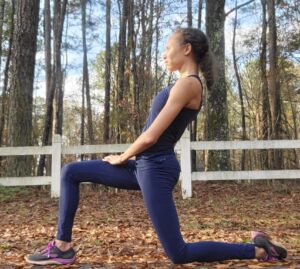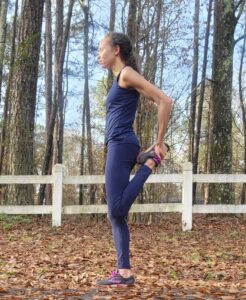
Low Back Pain While Running?
You should probably check your hips.
Are you a runner and trying to work on improving your time with your runs or even increasing your distance, but you are noticing some low back pain? There are various reasons that can lead to this, and one that I have noticed is often overlooked. Yes, it is true that runners need good core strength and that running in itself activates your core muscles. Runner’s also need good mobility of the spine and hips. The mobility and range of motion of joints required for activities such as running can often be overlooked.
First, it is important to say that the prevalence of low back pain (LBP) is low in runners. So, if you are a runner, know that your chances of developing low back pain are less when compared to other sporting/athletic based activities. However, if you are a runner who is experiencing low back pain or a runner who hopes to prevent the occurrence of LBP, then this brief read is for you!
Everyone automatically thinks that LBP is due to core related weakness, but there can be other contributing factors. One of the most common reasons that someone may have LBP while running is due to lack of hip mobility. If you are not getting enough hip extension, then your body has to get this motion from a different area and your lumbar spine is usually the next best bet. As the foot prepares to leave the ground, before the leg transitions forward to take the next step, it is expected for one to have achieved a certain degree of hip extension. Hip extension at this point is typically the greatest it will be during an individual’s running pattern. If you have tight hip flexors or limited joint motion at the hip, then this can be a problem and cause your lumbar spine to respond.
Now, what can you do about this lack of hip extension to save yourself from LBP? Yes, stretching the hip can be key, but if you are stretching improperly then it won’t be beneficial. Other times the motion is limited because of restrictions at the actual joint. If this is the case, you may benefit from self-joint mobilizations. And, there is one other factor that I feel is important to mention as to why hip extension may be limited. That last factor is related to hip flexor weakness.
Muscle weakness can present itself as tightness and often times the weakness component is not addressed. If you find yourself constantly wanting to stretch a tight muscle, it may because that muscle, or surrounding muscle, is too weak to perform the task at hand and becomes tight to help your body compensate. So, before you immediately think you need to stretch, consider that you could be weak and may need to work on strengthening the involved area(s). This strengthening can help ensure that as you gain motion you will have the muscular support necessary to perform desired tasks.
Here are two common stretch for hip flexors that I often see performed incorrectly. Check your positioning while you stretch and make sure you are not cheating. Check out the pictures below and make sure you look like the second position for each stretch.
For more tips on helping to improve your hip flexor flexibility and strength, check out this quick video. Click Here for video.
*The content presented is for informational or educational purposes only, and does not substitute professional medical advice or consultations with healthcare professionals




